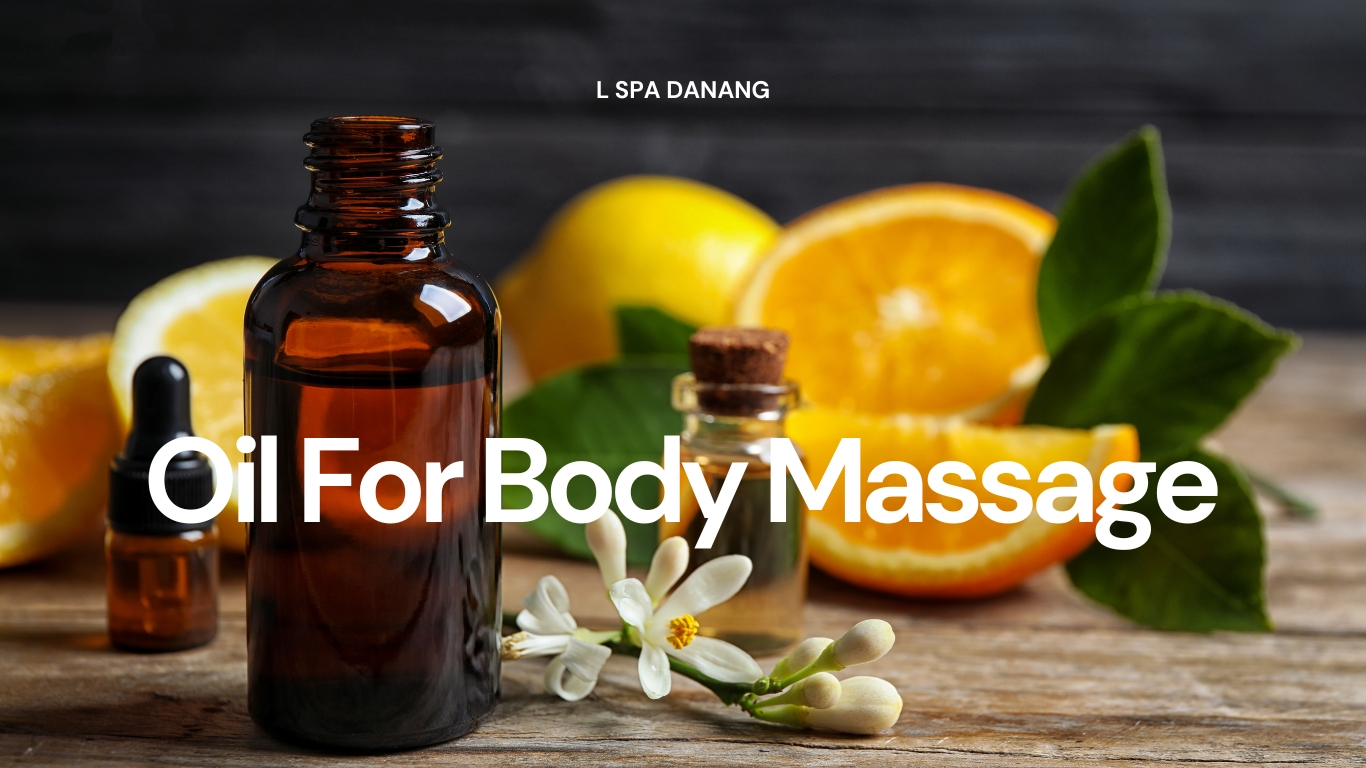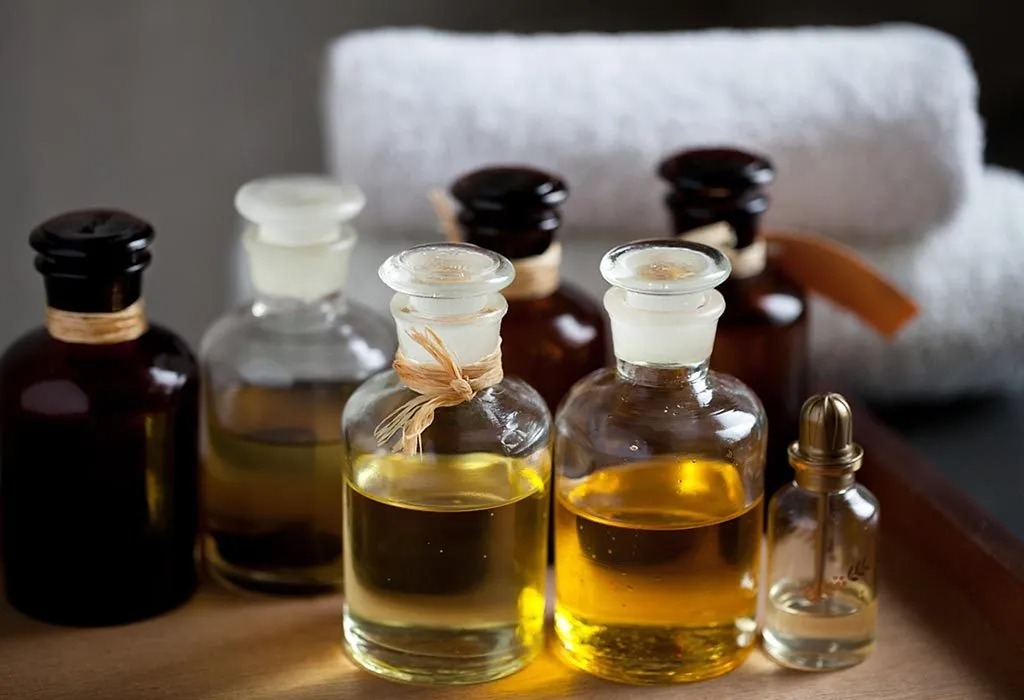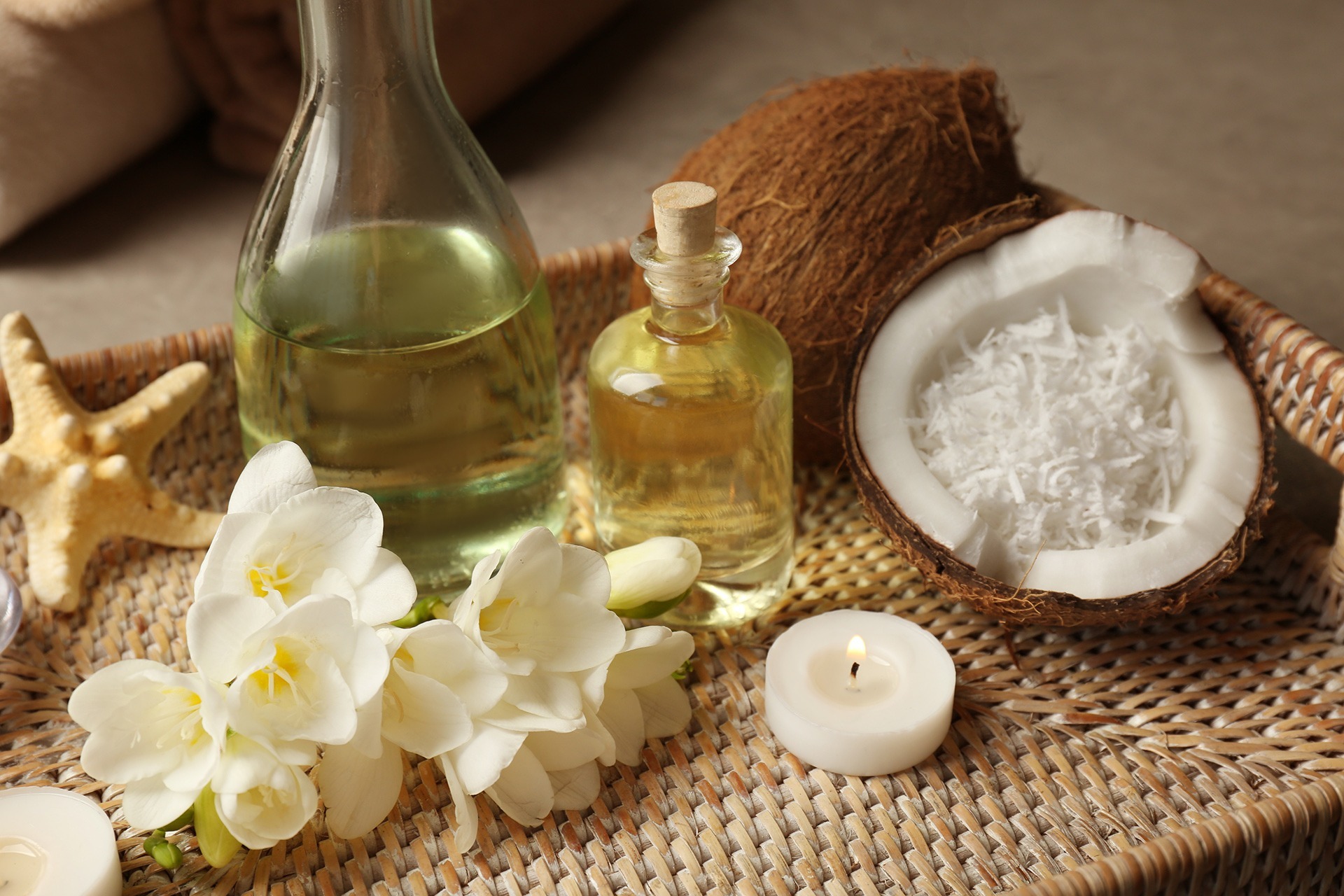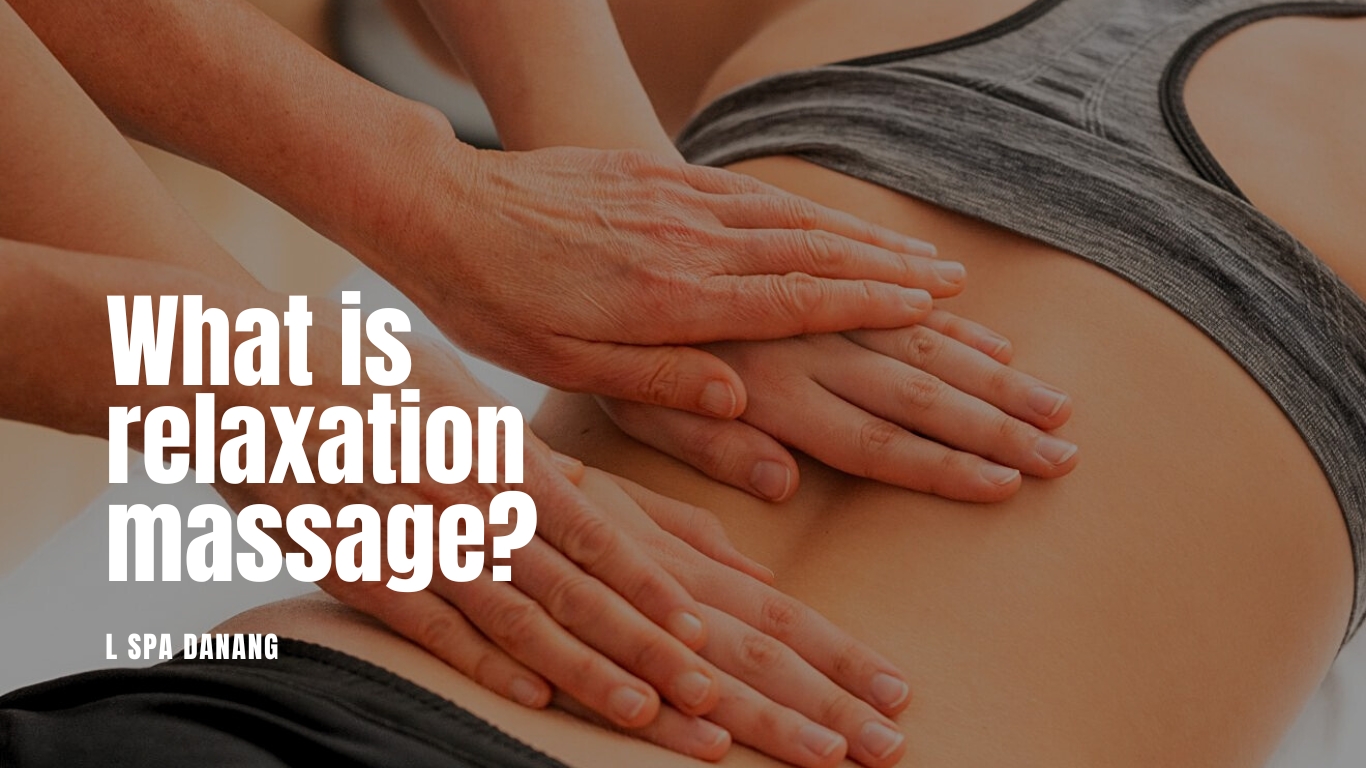Experience relaxation after a long and exhausting day with a soothing massage that can be easily enjoyed at home. Simply reach for natural massage oils to enhance the experience. Discover which oils are considered the best and the benefits of regularly massaging the body with these natural oils. Uncover the natural power of Oil For Body Massage.

What Is An Oil For Body Massage?
Body oil massage is a treatment involving the application of body oils to relax and soothe the body. This ancient practice has been utilized for centuries by diverse cultures worldwide, spanning from India to Africa and beyond.
The purpose of a body oil massage is to enhance circulation, boost joint flexibility, and induce a profound sense of relaxation. Typically, the body oil used in this massage consists of a blend of essential oils known for their therapeutic properties, such as calming, stimulating, and invigorating effects on the body.
What Are The Benefits Of Using Oil For Body Massage?
Body massage is an excellent method to unwind and de-stress after a lengthy day. It aids in stress reduction, pain relief, and the enhancement of blood circulation. Particularly beneficial for athletes or those engaged in physical activities, body massage effectively diminishes muscle soreness and stiffness.
Some of the benefits associated with body massage using essential or carrier oils include:
- Relieving muscle tension: Body massage effectively relaxes tight and strained muscles resulting from prolonged sitting, standing, or physical activity. It releases accumulated tension in the muscles, promoting a sense of relaxation.
- Promoting blood circulation: Massage contributes to the stimulation of blood circulation in the body, facilitating the transport of oxygen to muscles and organs. This process aids in reducing inflammation and fostering healing.
- Alleviating stress and anxiety: Massage is effective in reducing stress and anxiety levels, addressing factors that can contribute to various physical and mental health issues. It works to calm the mind, fostering a sense of relaxation and overall well-being.
- Enhancing flexibility and range of motion: Regular body massage contributes to improved flexibility and range of motion in muscles and joints. This can aid in injury prevention and elevate athletic performance.
- Strengthening the immune system: Massage plays a role in enhancing the immune system by increasing the presence of white blood cells in the body. This boost helps in the fight against infections and illnesses, promoting overall health and well-being.
Factors To Consider When Choosing A Massage Oil

Choosing the optimal massage oil is a deeply personal decision. Various oils present diverse textures and absorption rates, necessitating careful consideration of your preferences and the specific massage purpose. Here are key factors to bear in mind:
- Texture: Massage oils come in a spectrum of textures, ranging from lightweight options to thicker, more viscous varieties. Lightweight oils like jojoba oil and sweet almond oil effortlessly glide across the skin, making them suitable for general relaxation massages. On the other hand, thicker oils such as avocado and coconut oil provide more traction, making them apt for deep tissue massages that require additional pressure.
- Absorption Rate: Consider the desired speed at which you want the oil to be absorbed into your skin. For those who appreciate the sensation of oil gradually penetrating for deep nourishment and hydration, leaving it on the skin is preferable. In contrast, if you prefer a lighter feel or dislike the lingering sensation of oil, opt for faster-absorbing oils such as grapeseed oil or coconut oil.
- Skin Sensitivity: If you have sensitive skin or allergies, prioritize vegan or organic massage oils with fewer chemicals and potential irritants. Generally well-tolerated by most skin types, carrier oils like sweet almond oil and jojoba oil are good choices. However, conducting a patch test before using any new oil is advisable to ensure there is no adverse reaction.
- The intent of the Massage: Contemplate the precise purpose of the massage and select an oil that aligns with it. For relaxation and overall well-being, lavender essential oil is renowned for its calming properties. If your goal is pain relief or seeking anti-inflammatory benefits, oils such as eucalyptus or peppermint are recommended. A clear understanding of the massage’s purpose assists in choosing the most appropriate oil for the occasion.
The Best Oils For Body Massage
ALMOND OIL: Cold-pressed and unrefined, sweet almond oil earns the moniker “Guard of Youth” for its role in skin hydration and preventing elasticity loss. Suitable for various skin types, it possesses the unique ability to be applied to newborn skin. Recognized for its consistency, almond oil is acclaimed as one of the best for massages, ensuring fast absorption that nourishes the skin intensively from within.
GRAPE SEED OIL: Comprising predominantly precious fatty acids and vitamin E, grape seed oil exhibits antioxidative properties. When utilized as a massage oil, it actively combats premature signs of aging.
JOJOBA OIL: Often recommended for massages due to its structure closely resembling our natural sebum, high-quality jojoba oil is exceptionally well-tolerated by the skin. Rich in precious fatty acids and vitamin E, it serves as a valuable source delivered to the body during massages. Additionally, jojoba oil stands out as one of the finest moisturizing oils, contributing to the rebuilding of the skin’s natural hydro-lipid barrier, regeneration, and revitalization.
AVOCADO OIL: A powerhouse of vitamins, cold-pressed avocado oil swiftly permeates the skin, leaving it intensely moisturized and nourished for an extended period. This oil, rich in minerals, offers a wealth of vitamins A, B, D, E, H, K, and PP, along with omega-3 and omega-6 fatty acids. Recognized for its regenerative properties, avocado oil proves to be a valuable addition to skincare.
OLIVE OIL: Derived through cold pressing and in its unrefined state, olive oil stands as one of the most commonly used carrier oils for crafting massage blends. Its widespread use is unsurprising, given olive oil’s ability to maintain optimal skin hydration, smoothen the skin’s texture, enhance its radiance, and provide protection.
COCONUT OIL: Natural coconut oil entices with its delightful aroma while delivering a multitude of precious fatty acids and vitamins, contributing to the restoration of skin health and beauty. However, preparation is required before using it for massages, as coconut oil has a consistency resembling hard-to-distribute butter at room temperature. Warming it up just before the massage ensures its smooth application.
Method Of Application The Oil For Body Massage

Begin with warm massage oil. Store the oil in a small container and warm it by placing the container under running hot water or setting it in a bowl or container of hot water. Dip your fingertips into the warm oil and gently massage it onto your palms. Applying the oil lightly to your entire body. Commence the massage by starting with your head and forehead, gradually working your way down towards your legs and toes.
Allow a few minutes for the oil to be absorbed by your skin before proceeding to massage your entire body, applying consistent pressure with your entire hand. Use circular motions on rounded areas like your head or joints, and utilize straight strokes on areas such as your arms and legs. Maintaining an even and repetitive back-and-forth motion over the long bones.
When working on sensitive areas like the abdomen or heart, apply gentle pressure and conduct the massage in a clockwise direction. Allocate more oil and extend the duration of massage on areas where nerve endings are concentrated, such as the soles of the feet, palms of the hands, and along the base of the fingernails.
After completing the massage, take a leisurely break for 30 to 40 minutes, or even an hour, allowing the oil and the effects of the massage to seep in. The longer the oil remains on your skin, the deeper it penetrates.
FAQs
What is a body oil massage called?
Abhyanga refers to a massage performed with warm oil, covering the entire body from the scalp to the soles of the feet.
Which oil is best for the whole body?
In essence, natural oils such as coconut oil, tea tree oil, jojoba oil, and shea butter possess skin-friendly properties. Some function as antioxidants or anti-inflammatory agents, fostering the healing of damaged skin, moisturizing, diminishing scarring, or addressing skin conditions like acne.
What is the difference between body oil and massage oil?
The disparity between massage oils and body oils encompasses factors such as scent, consistency, and ingredients. Massage oil tends to be thicker, spreading easily with a higher concentration of essential oils, and is less readily absorbed by the skin.
This article is for informative reference and to explain the benefits and uses of Oil For Body Massage. To learn more about our available treatments and services, please visit the L Spa Da Nang website.





